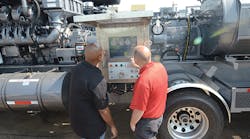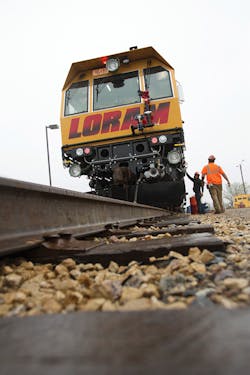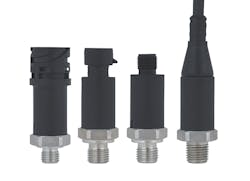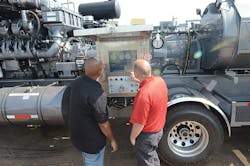This file type includes high-resolution graphics and schematics when applicable.
While the Industrial Internet of Things (IIoT) grows, many question what value it brings to industry. Some IIoT systems work with current production lines and equipment. For example, smart sensors or cameras can mount on existing equipment to provide features and data that add value to the production line and company. Other technology aims to replace equipment by offering already-integrated, value-added smart sensors and IIoT devices. Machine talks to the experts to see where the return on investment (ROI) is with replacing or retrofitting when considering IIoT.
The Right Adoption Rate
Economics can help assess the adoption rate and ROI of IIoT. If the technology isn’t stable enough to provide an accurate ROI, it isn’t worth investing in it or you need to expand the scope of where the data could offer value. “Connected devices can augment data for managers to make more informed decisions that will improve production,” says Beth Parkinson, market development director for The Connected Enterprise at Rockwell Automation. Collected data is able to improve production in multiple ways. In fact, data can keep a company competitive using two specific methods—focused and collaborative views.
Focused data—for example, how much energy a specific motor uses or if a lens is dirty—can help reduce downtime and run processes more efficiently. In a collaborative view, aggregated data can show a root cause problem or bottleneck issues across production lines, departments, and even companies. It’s more complicated to estimate an accurate ROI with a collaborative view due to the variables involved and interpretations of certainty.
The hype surrounding IIoT seems to be traveling faster than its adoption rate. Often medium- to large-sized companies are reluctant to change due to the size of the company’s operations. The bigger the operation, the bigger the investment, and the more stable a new technology or equipment needs to be for larger companies to adopt.
However, a study released in 2014 by Cisco revealed that 52% of manufacturers were willing to migrate to hybrid clouds within two years. This may be due to the foundational groundwork that’s been building for the cloud and IIoT over the years.
“In the past, different equipment could have operated with different logic controls or languages,” says Parkinson. “Today, I could go to a food-processing plant or an automotive production line and it is possible that they have the same, or similar, controls and languages. In addition, four to five years ago, companies installed smart sensors in production lines. Now, those smart sensors provide a foundation on which to build the IIoT. With the ability for a production line to transmit and communicate data, a whole architecture is ready to be organized to take advantage of IIoT.”
New technology often provides competitive advantages. Aeris Communications, a machine-to-machine service provider conducted a survey of executives from the United States and United Kingdom (published October 2015) in which 73% of respondents felt the IoT gave them a competitive edge in manufacturing. In December 2013, a manufacturing outlook survey from the American Society for Quality (ASQ) stated that 82% of companies using smart manufacturing have experienced an increase in efficiency.
Education and Training
Small- to medium-sized companies may benefit from this technology as IIoT and smart equipment could be easier to adopt on a small scale. However, the resources and training needed to implement new technology may be problematic for small companies.
The IIoT is about information—the more you know, the smarter your decision-making. Continued education works in a similar way. Staying on top of new technology prevents uneducated decisions and becoming stagnant. Some companies suffer from a generation gap. This doesn’t necessarily relate to the age of employees, but rather the comfort level of the technology. If a particular process or software has worked in the past and everyone is comfortable with it, changing it can create resistance. Continued education keeps employees up to date on available technologies and how to use them.
Training is important. Engineers graduating from school tend to want to push for new technology. They will be more comfortable with technology they know, which may differ from what was imbued by the last generation of engineers. If this is the case, IIoT may have a longer adoption rate, simply due to having to wait for a generation to understand and be comfortable with IIoT and smart devices.
Going Custom
IIoT is highly customizable. Installing custom equipment can provide data that enables better decision-making while maintaining flexibility. For example, in the past, automated equipment used to seal flexible bags around products for shipping might have sealed one size bag despite the size of the product. Without any information, or the ability to be dynamic, packaging lines (e.g., the flexible bag sealing lines) were less efficient and wasted packaging material.
Today, with the amount of products available, and the speed of delivery demands with Internet ordering, packaging lines must be dynamic and be able to handle many shapes and sizes to keep up. Smarter systems used in the flexible bag sealing lines, and other processes, can scan a product and alter the size of packaging.
It’s important that customized smart systems be able to adjust for future applications. If a production line doesn’t maintain flexibility, it can develop a type of manufacturing momentum in one direction, and it might become difficult and expensive to update equipment and stay competitive. Take the automobile industry, where much of the equipment and stamping processes must use steel. If a manufacturer wanted an aluminum door, it might mean over $100,000 for new tool and die setups, and changing the molds generally turns into a long process. While the automotive industry may have the volume to justify a change, it can still take millions, or in Ford’s case, one billion dollars, and long lead times to make this happen. Manufacturing lines must limit manufacturing momentum by using IIoT and smart devices to promote flexibility.
Replace or Retrofit
“In my experience, equipment is being augmented by the IoT, not replaced,” says Jeremy King, product-marketing manager for Bimba. “Early adopters are still leading the IIoT movement, so they are still experimenting, looking for the best way to improve on their existing equipment and processes. Easy-to-install sensor networks integrated with existing machines are most popular for retrofits. When retrofitting a machine, the goal is to improve the equipment while minimizing the impact of the installation.” If the downtime to install IIoT or smart devices is long and tedious, it can diminish the upgrade’s ROI.
“A lot of companies focus on increasing uptime because it is one of the easiest areas to show an ROI,” continues King. “For smart and IIoT products, it’s important for buyers to understand exactly how they will decrease downtime. If the device just provides data, it is not that useful. The value is if the device can tell you when equipment will fail and why, so you avoid downtime. Each piece of smart equipment adds its own value—new or retrofit. Currently, I have seen retrofitting provide better ROIs.”
Retrofitting adds customization and flexibility while minimizing downtime. “Due to the increased costs of replacing equipment, it may not happen for some time,” says Matteo Dariol, product support engineer for Bosch Rexroth. “The difference between replacing and retrofitting is often a matter of what type of company you are. If you are a small family-owned machine shop, smart devices and IIoT might not offer enough benefits to consider either option. But an OEM might invest in new equipment to stay competitive. Other companies may find extra benefit in replacing equipment with newer IIoT or smart devices that allow the users to connect to a broader range of modern communication protocols and to access more insightful information on the equipment.”
Communicating across the entire company can complicate the economics. IIoT equipment may be specially customized and offer its own economical or ROI equation. Each equation could involve multiple interpretations of certainty, risks, and other unknowns that decrease its accuracy. The ASQ manufacturing outlook survey said 49% of companies using smart manufacturing experienced fewer defects. However, your defects are low or not expensive, so adding expensive retrofit or new equipment will not provide much of an ROI.
Statistics often don’t provide the full picture or gravity of IIoT’s potential, which is why marketing and buzzwords may be circumnavigating a better ROI until more data is available. It may also suggest that IIoT is broad and contains so many variables that an accurate ROI isn’t possible until you analyze a specific project.
Retrofitting IIoT into older equipment can add years to their lifetimes. Retrofitting can incorporate features to make the older machines competitive with new equipment. This equipment also provides data for more efficient maintenance schedules. Preventative maintenance is not just about reducing downtime, but increasing the life of the equipment.
“Eventually equipment might be replaced by IIoT devices, creating an influx for a secondary market, but it is not here yet,” says Bimba’s King. “Equipment users are just now experimenting with smart devices. They have not forced the requirements back to the machine builder. Machine builders are keeping an eye on smart technologies, but have not gone all in on it because of the increased costs. Once machine builders start offering smart machines and end users realize their value, those that can afford the investment will look toward replacement. That is still five to ten years away.” So if any startups or small companies are waiting for a boost in the second-hand market from IIoT, they will have to wait.
The race for IIoT has to focus on software, according to Bosch Rexroth’s Dariol. The ability to interpret data is the value behind IIoT. For example, dedicated shop-floor servers will monitor the status and the execution of orders and provide useful insights on processing throughput or other overall equipment effectiveness. Meanwhile, software programs will monitor sound sensors and reveal when a possible breakdown may occur. It’s how the software interprets the data, not just collecting data, which will improve a new machine’s ROI.
Make sure your IIoT plan focuses on economics and knowledge. “Do not invest in buzzwords—know what data you need and why it’s needed,” says Rockwell Automation’s Parkinson. “In addition, an IIoT device must not only perform the task assigned, but also generate useful information that leads to smarter decisions, and make sure you don’t fall back into using multiple controls that don’t communicate.”
Looking for parts? Go to SourceESB.






